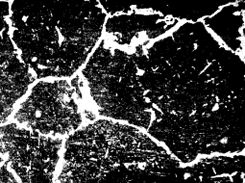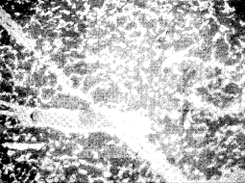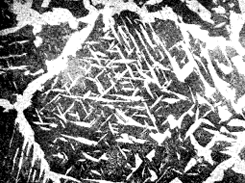Cast Steel: Understanding Microstructure and Austenite Grain Size Control
Abstract
This article examines the microstructural characteristics of cast steel, focusing on austenite grain size and its impact on mechanical properties. The equilibrium diagram limitations in predicting ferrite and cementite precipitation during cooling are discussed, highlighting three primary nucleation sites for phase formation. The formation of detrimental Widmanstätten structures and coarse network patterns, their adverse effects on steel properties, and methods for achieving controlled grain size through manufacturing processes are analyzed. Fine-grained steel production techniques using aluminum nitride precipitation and standardized grain size evaluation methods, including the McQuaid-Ehn test and quench-fracture testing, are presented as essential quality control measures.
Introduction to Steel Microstructure Formation
The equilibrium diagram provides limited insight into the actual morphology of ferrite or cementite phases that precipitate from austenite during the cooling process. Understanding the nucleation behavior of these phases requires examining the preferred formation sites within the steel matrix. During austenite decomposition, ferrite exhibits a distinct preference for three specific positions, ranked according to their degree of supercooling requirements and nucleation ease.
Ferrite Nucleation Sites and Phase Formation
The hierarchy of ferrite nucleation sites directly influences the final microstructure of cast steel. The primary nucleation location occurs at austenite grain boundaries, where interfacial energy provides favorable conditions for phase transformation. Secondary nucleation takes place along specific crystallographic planes, particularly octahedral orientations within the austenite matrix. The tertiary nucleation mechanism involves precipitation around inclusions present in the steel composition.

Figure 1: Grain boundary ferrite formation
When sufficient time is available for diffusion processes during cooling, ferrite begins forming at the austenite grain boundaries. This phenomenon creates a characteristic ferrite network structure surrounding pearlite regions concentrated in the grain centers. This microstructural arrangement directly reveals the size of the original austenite grains that existed above the A3 transformation temperature.

Figure 2: Widmanstätten structure formation
Widmanstätten Structure Formation and Its Consequences
Accelerated cooling rates prevent complete ferrite separation at large austenite grain boundaries, forcing precipitation to occur within the crystal along predetermined crystallographic planes. This intragranular precipitation creates a distinctive mesh-like arrangement known as Widmanstätten structure. This phenomenon extends beyond ferrite formation, as steels containing more than 0.9% carbon can exhibit similar cementite precipitation patterns, and Widmanstätten structures appear in various other alloy systems.

Figure 3: Inclusion-related nucleation
The presence of Widmanstätten structures significantly compromises steel mechanical properties through two primary mechanisms. First, these structures exhibit characteristically low impact resistance values. Second, they demonstrate reduced percentage elongation because the strong pearlite phase becomes isolated in ineffective patches, separated by either weak ferrite networks or brittle cementite formations. These weak interfaces provide preferential crack propagation paths, severely limiting the steel's ductility and toughness.
Industrial Occurrence and Modification Factors
Widmanstätten structures commonly develop in overheated steels and cast steel applications. However, the high silicon content typically employed in steel casting processes provides some modification of these detrimental microstructural features. Despite this partial mitigation, the fundamental mechanical property limitations remain significant concerns for structural applications.
Austenite Grain Size Control Methods
The prevention of Widmanstätten and coarse network structures represents a critical objective in steel manufacturing, as these microstructures partially depend on the original austenite grain size. Effective grain refinement methods include hot working processes and normalizing heat treatments, both of which promote fine austenite grain development.
Refined austenite grains remain susceptible to coarsening when heated significantly above the Ac3 temperature during various industrial operations. Welding, forging, and carburizing processes can induce grain growth unless appropriate restraint mechanisms are implemented through careful steel manufacturing procedures.
Controlled Grain Size Technology
Modern steel production enables the manufacture of two steels with virtually identical chemical compositions but fundamentally different grain growth characteristics. Each steel exhibits an inherent austenite grain size at any given temperature, with one remaining consistently finer relative to the other. Fine-grained steel increases in grain size when heated above Ac3, but the temperature threshold for significant coarsening occurs at substantially higher levels compared to coarse-grained steel variants.
Fine-grained steels achieve their superior characteristics through "killing" with silicon combined with a controlled aluminum excess. This aluminum forms aluminum nitride as submicroscopic particles that effectively obstruct austenite grain growth, exemplifying a broader metallurgical phenomenon of precipitation strengthening.
Aluminum Nitride Dissolution and Temperature Effects
The coarsening temperature corresponds to aluminum nitride dissolution behavior, with rapid solution occurring above 1200°C and virtually complete dissolution at 1350°C. This temperature-dependent dissolution explains the grain coarsening mechanism and provides guidance for process temperature control.
Grain Size Evaluation Methods
Accurate austenite grain size estimation employs standardized testing procedures that ensure consistent quality control across the steel industry.
The McQuaid-Ehn Test involves preparing micro-sections of structural steels through carburization for a minimum of eight hours at 925°C, followed by slow cooling to develop visible cementite networks. These prepared samples are photographed at 100× magnification and compared against grain-size charts issued by the American Society for Testing Materials. This test provides additional value in detecting pearlite abnormalities that may indicate processing irregularities.
The Quench and Fracture test procedure involves heating normalized steel sections above Ac3 temperature and quenching at 30°C intervals. Examination of the resulting fractured surfaces enables hardness depth and grain size estimation through comparison with standardized fracture references, providing rapid assessment capabilities for production environments.
Conclusion
Understanding and controlling austenite grain size in cast steel represents a fundamental aspect of achieving desired mechanical properties. The formation of detrimental microstructures like Widmanstätten patterns can be prevented through proper temperature control, appropriate cooling rates, and the implementation of grain refinement techniques. Modern controlled grain size technology, combined with standardized evaluation methods, enables consistent production of high-quality cast steel with optimized microstructural characteristics.
¡Encuentre al Instante las Propiedades Precisas de los Materiales de Fundición!
Total Materia Horizon contiene información sobre las propiedades de miles de materiales de fundición: composición, propiedades mecánicas y físicas, propiedades no lineales y mucho más.

Obtenga una cuenta de prueba GRATUITA de Total Materia Horizon y únase a nuestra comunidad que traspasa los 500.000 usuarios provenientes de más de 120 países.